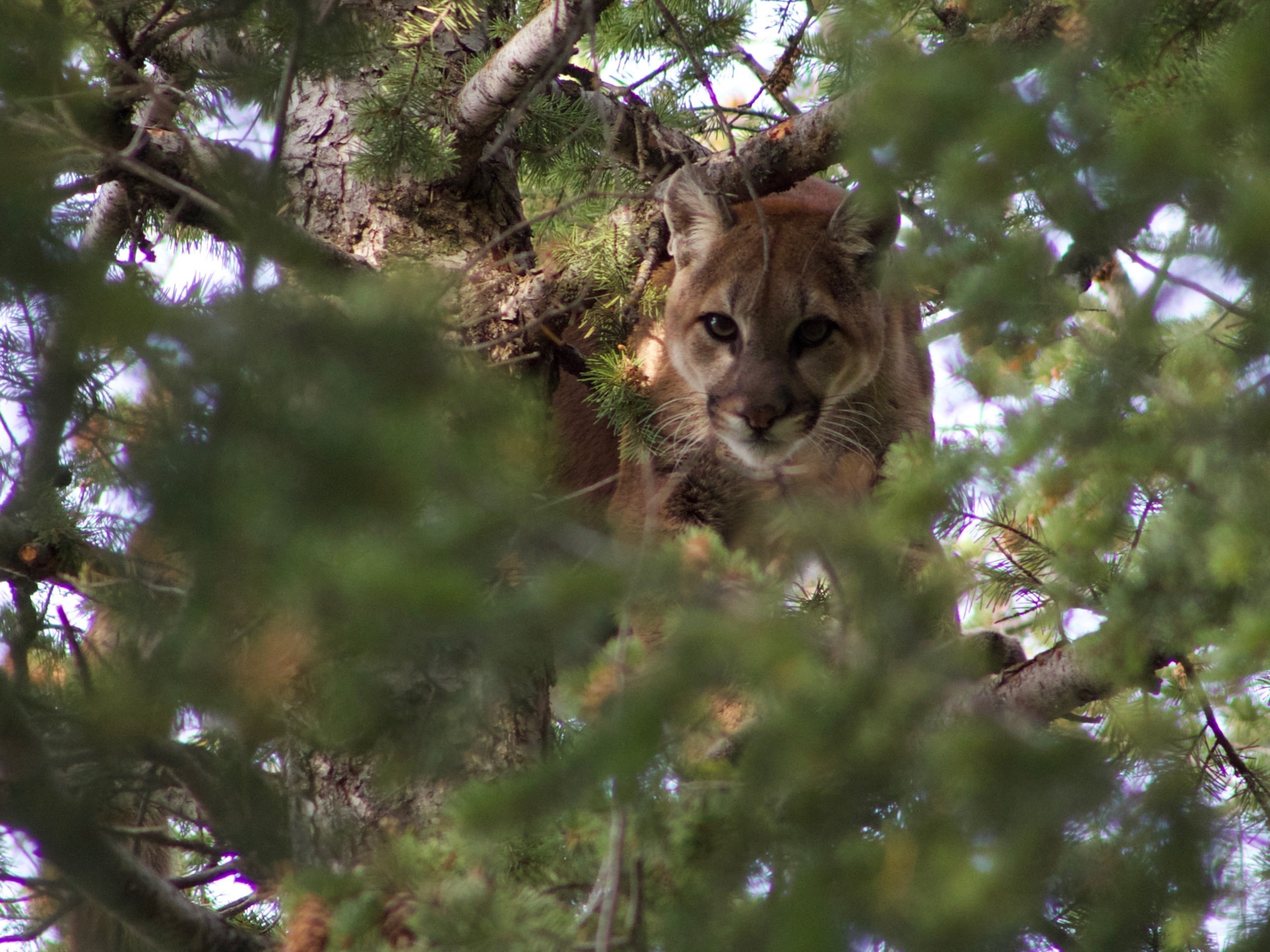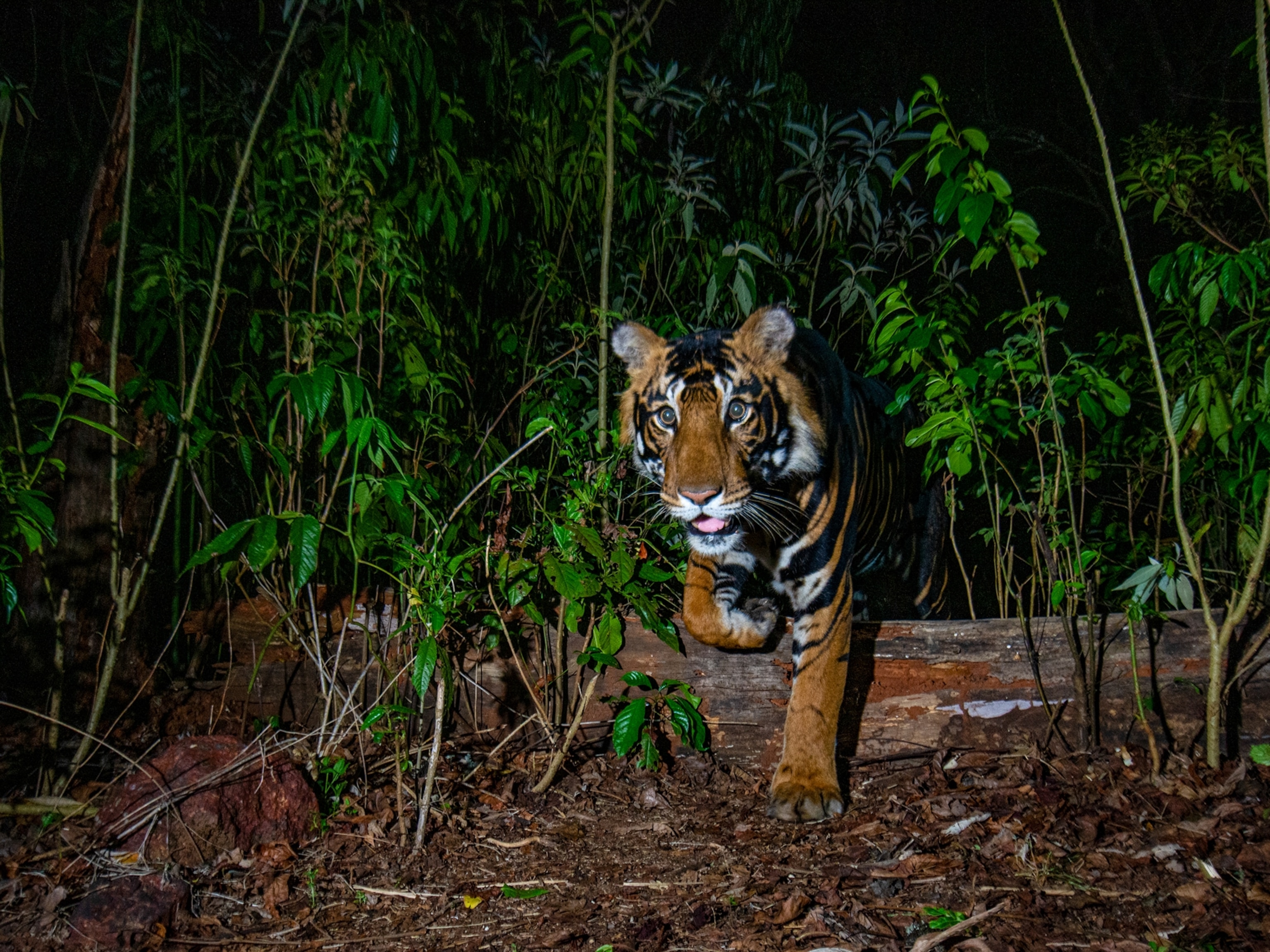Move over, black panther—there’s a white cougar in the limelight. Photographs recently resurfaced of a ghostly young male striding through Serra dos Órgãos National Park in southeastern Brazil’s Atlantic Forest. Taken in 2013, the photographs were the first confirmed case of a wild cougar with leucism, a genetic mutation that turns most of its body white.
“That shows you how extremely unusual it is,” says Luke Hunter, executive director of the Wildlife Conservation Society’s Big Cats Program and author of the book Wild Cats of the World. “It’s a striking set of photos.”
Genetic color aberrations, such as albinism and leucism, are relatively common among wild cats, but for unknown reasons, they’re almost unheard of in cougars, a successful predator whose habitat stretches from Canada to Chile, the biggest north-south range of any wild cat. (Read about a “strawberry” leopard found in Africa.)
For instance, melanism, a surplus of the black pigment melanin, occurs in 14 of the 40 known wild cat species, but no one has ever recorded a black cougar—either in captivity or in the wild. As for albinism, in which animals are unable to produce any kind of pigment—hence their pink eyes—there are only two records of such cougars, Hunter says: one at a zoo and one wild animal treed by hunters in the western United States. And outside of the Brazilian cougar, there is only one other known example of a cougar with leucism: An online photo taken at an unknown zoo, Hunter says.
“Another white cougar may not appear in my lifetime,” he says.
Not so black and white
Cougars, also known as pumas or mountain lions, display very little variation in coat colors overall, which are mostly muted, earthy tones of tan and gray.
Hunter says no one knows why color-changing genes are so rare in the species.
“My best guess is that the distant ancestor of pumas was uniformly colored, and that has been maintained in the species ever since,” he says. “But that’s just a consequence of the randomness of mutation, the roll of the genetic dice.” (See pictures of albino and leucistic animals, from squirrels to crayfish.)
After the photos were taken, researchers had hoped to capture the Brazilian cat and analyze its genes, but they haven’t seen it again, according to Cecília Cronemberger de Faria, an environmental analyst for the national park where the cat was sighted.
“The camera trap monitoring project restarted last year, but we still have no new record of this animal or any other odd-colored pumas,” she wrote in a recent email to National Geographic. Cronemberger de Faria is the co-author of the 2018 report in CATnews, a publication of the International Union for Conservation of Nature, that described the animal.
Though the lack of cougar color variation probably isn’t linked to any evolutionary advantage or disadvantage, there are theories that black panthers, an umbrella term that refers to any big cat with a dark coat, may benefit from the camouflage of a darker coloring.
For instance, black leopards are plentiful in the dense rainforests of peninsular Malaysia, but not in the deserts of Central Asia, suggesting black coats provide a benefit in dimly lit habitats. (See our exclusive picture of a rare black wild cat seen in Africa.)
A normal lifestyle
The CATnews study authors also raise the possibility that the leucistic cougar could be a sign of inbreeding in the rapidly shrinking Atlantic Forest, where cougar populations are more fragmented. The IUCN lists the conservation status of cougars as “of least concern,” although they are dwindling in many places, including Brazil, due to habitat loss and lack of prey.
But because no other leucistic animals have been sighted, “I doubt that’s at play here,” Hunter says.
The leucistic cougar’s pale coat is likely not a handicap, he adds: As an ambush predator, it would rely on the forest cover to get very close to a small mammal before attacking. Hunting would be more difficult, he notes, if the white cougar were hunting deer in the open plains of the western U.S.
As for its ability to find a mate, he chuckles, “I’m almost certain a female cougar wouldn’t mind.”






